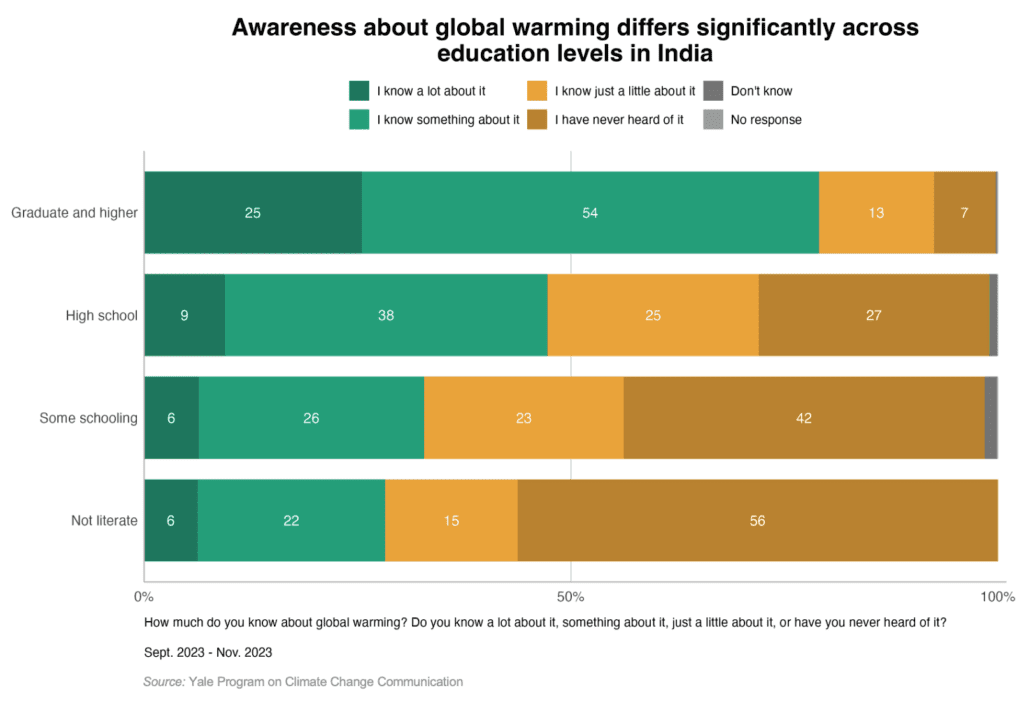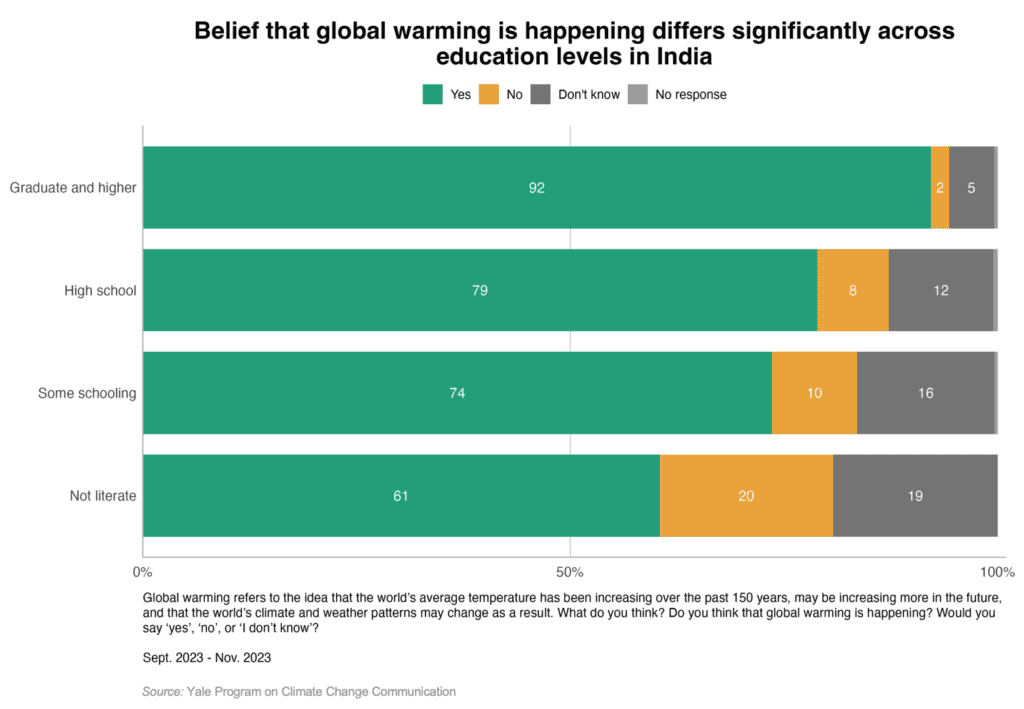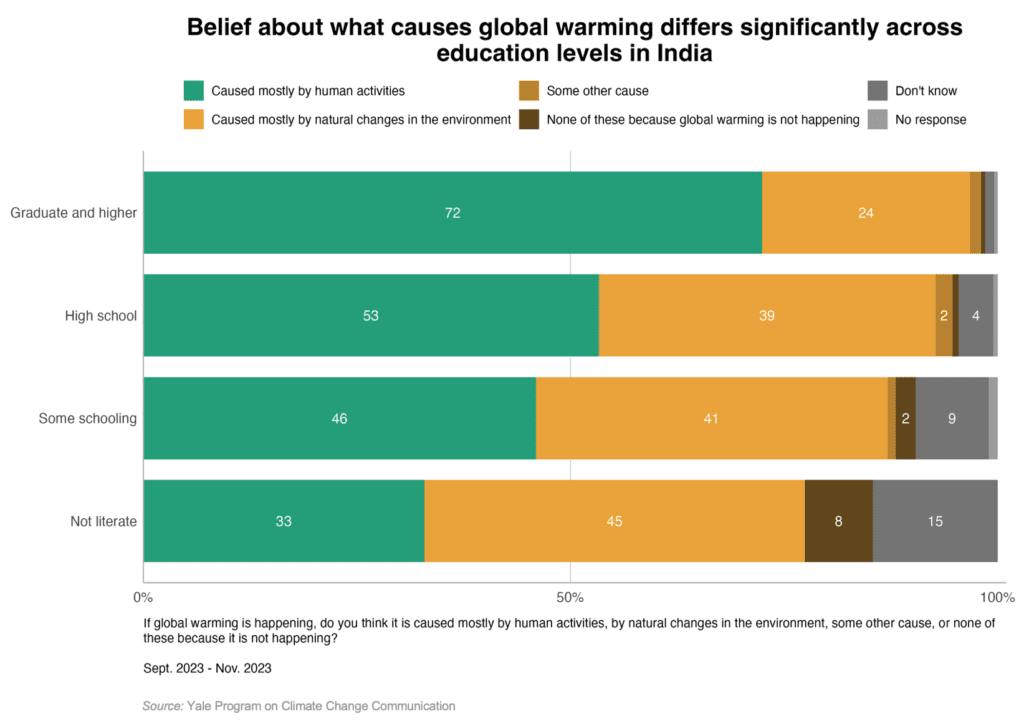Climate Note · Dec 12, 2024
How global warming beliefs differ by education levels in India
By Jazmin Morris, Matthew Goldberg, Laura Thomas-Walters, Jagadish Thaker, Emily Goddard, Jennifer Carman, Mallika Talwar, Marija Verner, Seth Rosenthal and Anthony Leiserowitz
Filed under: Beliefs & Attitudes

We are pleased to share findings from a recent analysis on how global warming beliefs differ by education levels in India. India is particularly vulnerable to the effects of climate change, having experienced significant climate impacts already, and with worse impacts projected in the future. India is also the world’s most populous country and a very important voice in international climate negotiations.
Given India’s diverse population, it is likely that global warming beliefs vary across different subgroups of the population. In our prior global study, for example, we found that educational attainment was the single strongest predictor of global warming awareness worldwide. Given the large differences in levels of educational attainment in India, education might be an especially important factor in Indians’ global warming beliefs and attitudes. Further, understanding the role of education in public responses to climate change can help inform the design of communication strategies for these different subgroups.
Using our latest data from the Climate Change in the Indian Mind project, we grouped the Indian population into four main educational categories: Not literate, Some schooling, High school graduate, and Graduate and above (people with a college degree or more). We then explored differences in global warming awareness and beliefs across these four groups.
Consistent with what we found in our original 2012 report, there were large differences in global warming awareness. For people who are not literate, 56% say they have never heard of global warming while, for people with a college degree or higher, only 7% say the same. Global warming awareness increases as educational level increases.
After being given a definition of global warming, respondents reported whether they think global warming is happening. Findings followed the same trend by education level—61% of people who are not literate think global warming is happening whereas 92% of people with a college degree think it’s happening.
Similarly, understanding that human activities are the main cause of global warming increases as education level increases. About seven in ten (72%) people with a college degree or higher believe that global warming is caused primarily by human activities, whereas far fewer people with lower levels of educational attainment think so. For example, only about half (53%) of people with a high school diploma think global warming is caused primarily by human activities.
Together, these findings show that there are large differences based on education level in the Indian public’s awareness and beliefs about global warming. These findings also raise a key challenge for climate communication in India: Different educational subgroups will bring much different levels of awareness and understanding to the issue. For those who are not literate, for example, communications might emphasize verbal messaging modes and focus on raising awareness and building a basic understanding that global warming is happening. For people with higher levels of education, it may be more productive to focus on global warming causes and solutions. In sum, it is important to keep these large subgroup differences in mind when designing communication strategies to meet people where they are.
View Data Tables for accessibility.


